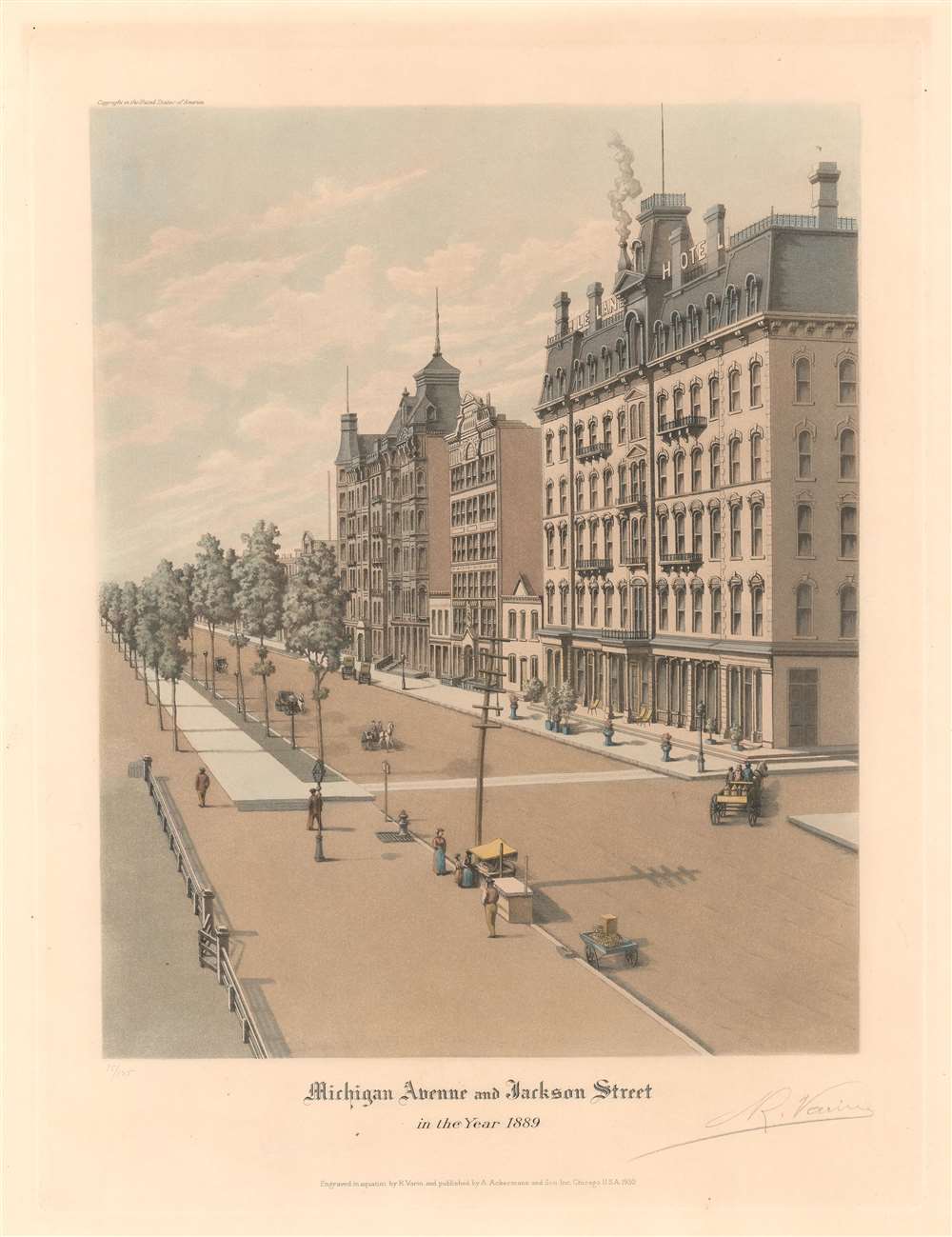This item has been sold, but you can get on the Waitlist to be notified if another example becomes available, or purchase a digital scan.
1930 View of the Magnificent Mile, Michigan Avenue and Jackson, Chicago
MichiganAveJacksonSt-varin-1930
Title
1930 (dated) 19 x 14.75 in (48.26 x 37.465 cm)
Description
The Leland Hotel
The Leland Hotel, then called the Gardner House, opened its doors on October 1, 1872, and holds the distinction of being the first hotel to open in the burn zone following the 1871 Great Chicago Fire. Gardner House was built by Horation H. Gardner, treasurer of the Gardner and Spry Lumber Company, at about $600,000. Gardner and his partner Frederick Gould managed the hotel until 1875 when it entered an era of continually changing owners from 1876 until early 1881 when Warren F. Leland purchased Gardner House. When Leland purchased Gardner House, it has fallen into disrepair, and he spent $130,000 (on top of the purchase price of $200,000) renovating and rearranging the hotel. After his renovations were finished, the Leland Hotel was recognized as one of the finest buildings in Chicago and quickly earned a reputation as one of the finest hotels in the western United States.Source Print
We have been unable to determine the source print for this piece.Aquatint
Aquatint is a printmaking technique that has been used since the 18th century. In aquatint, the artist creates an image by marking on the surface of a copper or zinc plate. The marks hold the ink, which is then transferred to paper when the plate is passed through a printing press. One of the innovations of the aquatint process was the ability to create tonal variation depending on how the image was etched onto the printing plate.Publication History and Census
This view was created by Raoul Varin and published by A. Ackermann and Son in Chicago in 1930. Varin produced a series of thirty-one views of Chicago between 1926 and 1932, each issued in a limited edition of 125 prints. The present print is hand-numbered in the lower-left corner and is number 75 of 125. It is signed by Varin on the lower right. Today, Varin's prints are known to have suffered from poor framing and are generally not in the best condition. The presently offered print, however, is stunning. We are aware of no other surviving examples of the present print.CartographerS
Raoul Varin (1865 - 1943) was a French watercolorist active in Europe and the North America in the late 19th and early 20th centuries. Varin exhibited in the Salon of French Artists and received an honorable mention in 1892. He is most famous for his historic Chicago aquatint views, of which he produced some 31 between 1926 and 1932. The collection included historic views drawn from early sources as current views of Chicago as Raoul saw it. Some were engraved by Ernest Byfield, who was the initial publisher of the series. Later, after Byfield went bankrupt, publication was taken over by A. Ackermann and Son's Chicago office. Buoyed by the success of his Chicago series, Varin went on to produce a series of 'Old New York', images, but these did not attain the same level of popularity. More by this mapmaker...
Ackermann (1795 - 199x) was a British publishing firm founded by Rudolph Ackermann (April 20, 1764 - March 30, 1834). First known as R. Ackermann and Company, Ackermann's three sons took over the business when their father retired. The firm was known as A. Ackermann and Son in the early 20th century and had offices in London, Paris, New York, and Chicago. Their New York office was exceptionally prolific, issuing work for both the private and government sectors. Ackermann was acquired in late 1990s and the imprint resurrected. Learn More...

